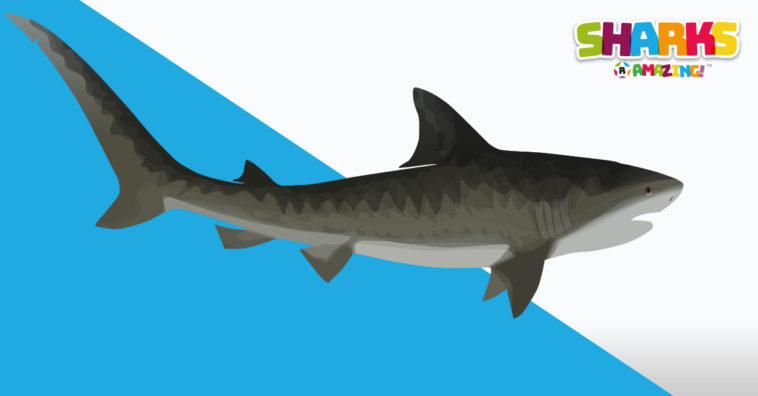The real reasons why sharks attack humans
Humans are like ungainly packets of meat when paddling in the ocean and should be easy prey compared to fast-moving fish and seals. So, why are so few people attacked by sharks?
The crystal-clear water beneath 13-year-old Hannah Mighall darkened for a moment. She was sitting astride her surfboard, enjoying the warmth of the sun as she and her cousin waited for the next wave in Tasmania’s idyllic Bay of Fires. Behind them the brilliant-white sandy beach was largely deserted and the surfing had been good so far.
The sudden shadow below made Mighall instinctively lift her feet – balls of kelp often broke off nearby rocks and drifted in the surf. “They are really slimy so I hated touching them,” she says.
But then something took hold of her leg.
The water around Mighall exploded as a five-metre-long great white shark latched onto her right leg
“It didn’t hurt at first, it was like something gently grabbed hold of me and then I was in the water,” says Mighall.
To those who witnessed what happened, however, it was anything but gentle. The water around Mighall exploded as a five-metre-long great white shark latched onto her right leg, lifted her off the surfboard and shook her in the air before disappearing underwater.
“It took a few seconds for me to realise it was a shark,” she says. “When I popped back up from the water I was lying on my back but my leg was in its mouth. All I could see was my black wetsuit leg, its teeth, pink gums, teeth and the dark bit under its nose where it meets white. I thought I was having a nightmare and kept trying to blink my eyes open.”

Mighall’s cousin, 33-year-old Syb Mundy, who had been sitting on his own board just a few metres from her, raced over and began punching the shark in the side of its head. The shark pulled away from him and as it went underwater it let go of Mighall, lunging instead for her surfboard that was still attached by a rope to her leg.
With the board in its mouth, the shark pulled Mighall underwater for a second time. Moments later she popped back up to the surface with her damaged board. The animal had bitten clean through the fibreglass and foam.
Mundy grabbed hold of his cousin, put her on his back and paddled frantically for the shore. Earlier that day Mighall had been practicing water rescues with another girl during training with her local Surf Life Saving association, repeatedly being carried into shore as the “victim”. Now she was doing it for real.
The shark came with us all the way up to the beach
Hannah Mighall
“The shark was circling us underwater,” says Mighall. “Then this wave came in and Syb just said, ‘We have got to catch this as it is going to save our lives.’ I was just tapping the water as I was terrified but he was really paddling and the wave carried us to shore. The shark came with us all the way up to the beach as there is a deep gutter running up to it. We could see its fin as it surfed in on the same wave.”
Luckily for Mighall, among the few people on the beach who witnessed what had happened that day were a doctor and a nurse. They gave her vital first aid while waiting for an ambulance to arrive.
More than 10 years later, she still carries deep scars on her leg that trace the outline of the shark’s mouth. Her right leg is noticeably weaker than her left – so much so that she has to lift it with her hands when she wants to kick-start the dirt bike she rides occasionally.

Mighall was one of roughly 83 people around the world to be attacked unprovoked by sharks in 2009. It is a figure that has remained around the same level over the past decade. The average number of unprovoked attacks between 2013-2017, for example, was 84.
But recent research indicates that shark attacks in some parts of the world appear to be on the rise. The eastern US and southern Australia have seen shark attack rates almost double in the past 20 years, while Hawaii has also seen a sharp increase. But why?
“Shark bites are strongly correlated to the number of people and number of sharks in the water at the same time,” says Gavin Naylor, director of the Florida Program for Shark Research, which maintains the International Shark Attack File. “The more sharks and people there are in one place, the greater the chance of them bumping into each other.”
This seems like an obvious point, but when you look closer at where attacks are taking place there are some clues as to what might be going on. The large human populations along the southern coast of Australia and the eastern coast of the US mean large numbers of people enjoying the water. But southern Australia has also seen rising numbers of fur seals along its coastline, the favourite prey of great white sharks in the region.

Similarly, seal populations off Cape Cod on the coast of Massachusetts in the US have rebounded in recent years, largely thanks to protection by the US’s Marine Mammal Act introduced in 1972. This has led to increased numbers of great whites in the area too during the warm summer months as they look to feast on the seals that pull themselves out to bask on the beaches.
Sadly, last autumn, Massachusetts suffered its first fatal shark attack in 82 years and growing numbers of shark sightings have led to a string of beach closures.
We are like helpless little sausages floating around in the water
Gavin Naylor
But there is no real evidence that sharks are actively hunting humans, according to the scientists who study them. Great whites in the North Atlantic, for example, show seasonal movement patterns, migrating thousands of miles to warmer waters further south during the winter months. Some mature adults will venture out into the open ocean for months at a time, covering tens of thousands of miles and diving to depths of 1,000m as they seek prey.
“We are like helpless little sausages floating around in the water,” says Naylor. But despite being potentially such an easy meal, sharks are really not that interested in hunting humans. “They generally just ignore people. I think if people knew how frequently they were in water with sharks, they would probably be surprised.”
However, Naylor believes that the official statistics on shark attacks are probably an underestimate. Most reports come from highly developed countries with large populations and highly active news media. Attacks on remote islands or in less developed communities probably go unreported.
Looking at the statistics for the number of shark attacks last year can reveal some fascinating trends. Last year, there were just 66 confirmed, unprovoked attacks, roughly a 20% fall compared to previous years. Just four of these were fatal according to the International Shark Attack File, although another database of shark attacks records seven deaths. So far in 2019, there have been four fatal shark attacks.

The reason for the fall – which bucks the overall trend of growing numbers of attacks – has been attributed to a sharp decline in the number of black-tipped sharks. These sharks account for many of the bites around the south-eastern US, migrating down the coast of Florida due to rising sea temperatures that have led their prey to become more dispersed.
The findings highlight one of the key challenges in understanding why sharks bite humans. There are dozens of different species responsible for bites, each with their own unique behaviour, hunting strategies, prey and preferred habitat – although in many cases the species can be misidentified or not identified at all.
The majority of unprovoked attacks on humans where a species is identified involve three large culprits: the great white, tiger and bull sharks. Yet great whites – the species depicted in the film Jaws and demonised by Hollywood ever since – isn’t just a separate species, but an entirely different taxonomic order from the other two.


“There are 530 different species of shark and there is so much diversity among them. You can’t just group them together,” says Blake Chapman, a marine biologist who has studied shark sensory systems and recently wrote a book on shark attacks on humans. “Different species have such a range in terms of their sensory biology, how they behave, their motivations and the habitats they live in.”
Bull sharks, for example, tend to hunt in shallow, murky water that will require them to rely less on vision and more upon their sense of smell and electroreception, which allows them to detect minute electrical fields produced by their prey.
There is some evidence that shark teeth may also function as mechanosensory structures to help the animals learn more about what they are biting
“(Great) white sharks, which often hunt in very clear water use their vision a lot more and their eyesight is much better,” says Chapman. There is also some evidence that shark teeth may also function as mechanosensory structures – similar to touch – to help the animals learn more about what they are biting.
Chapman believes there may be a complex set of reasons for why unprovoked attacks on humans appear to have risen in recent decades.
Aside from rising human populations along coastlines, the destruction of habitat, changing water quality, climate change and shifts in prey distribution are leading sharks to gather in greater numbers at certain hotspots around the world.In 1992, for example, there was a sudden spate of shark bites off the coast of Recife, Brazil – an area that had no unprovoked attacks for the entire previous decade. Chapman believes that heavy commercial port construction in the area damaged large areas of reef and mangrove, potentially displacing species like bull sharks, which moved to new areas like Recife in search of prey.
Read the full article at www.bbc.com/future/





GIPHY App Key not set. Please check settings